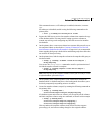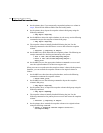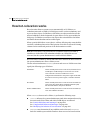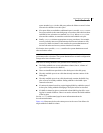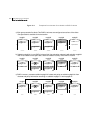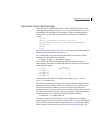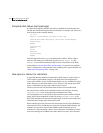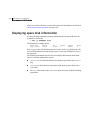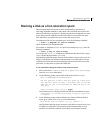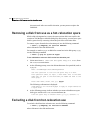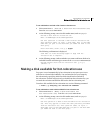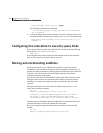
383Administering hot-relocation
How hot-relocation works
Partial disk failure mail messages
If hot-relocation is enabled when a plex or disk is detached by a failure, mail
indicating the failed objects is sent to root. If a partial disk failure occurs, the
mail identifies the failed plexes. For example, if a disk containing mirrored
volumes fails, you can receive mail information as shown in the following
example:
To: root
Subject: Volume Manager failures on host teal
Failures have been detected by the Veritas Volume Manager:
failed plexes:
home-02
src-02
See “Modifying the behavior of hot-relocation” on page 395 for information on
how to send the mail to users other than root.
You can determine which disk is causing the failures in the above example
message by using the following command:
# vxstat -g mydg -s -ff home-02 src-02
The -s option asks for information about individual subdisks, and the -ff
option displays the number of failed read and write operations. The following
output display is typical:
FAILED
TYP NAME READS WRITES
sd mydg01-04 0 0
sd mydg01-06 0 0
sd mydg02-03 1 0
sd mydg02-04 1 0
This example shows failures on reading from subdisks mydg02-03 and
mydg02-04 of disk mydg02.
Hot-relocation automatically relocates the affected subdisks and initiates any
necessary recovery procedures. However, if relocation is not possible or the
hot-relocation feature is disabled, you must investigate the problem and
attempt to recover the plexes. Errors can be caused by cabling failures, so check
the cables connecting your disks to your system. If there are obvious problems,
correct them and recover the plexes using the following command:
# vxrecover -b -g mydg home src
This starts recovery of the failed plexes in the background (the command
prompt reappears before the operation completes). If an error message appears
later, or if the plexes become detached again and there are no obvious cabling
failures, replace the disk (see “Removing and replacing disks” on page 112).



